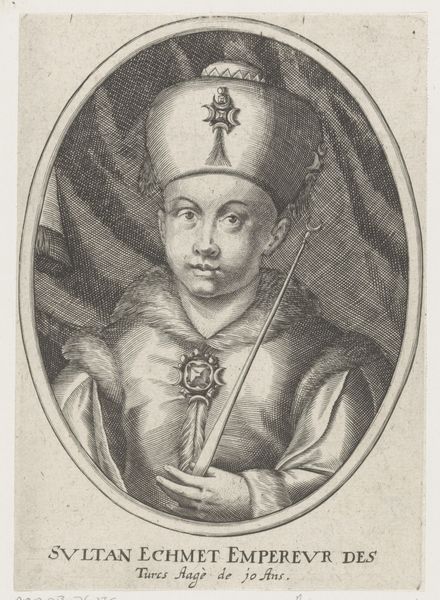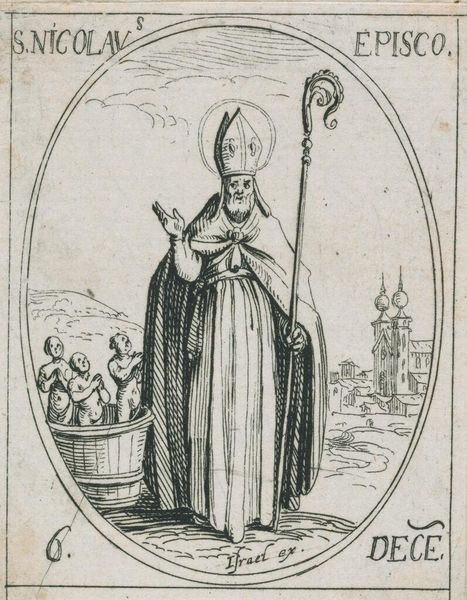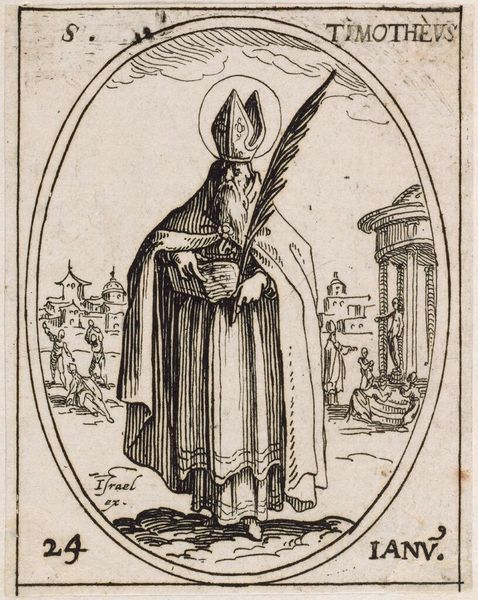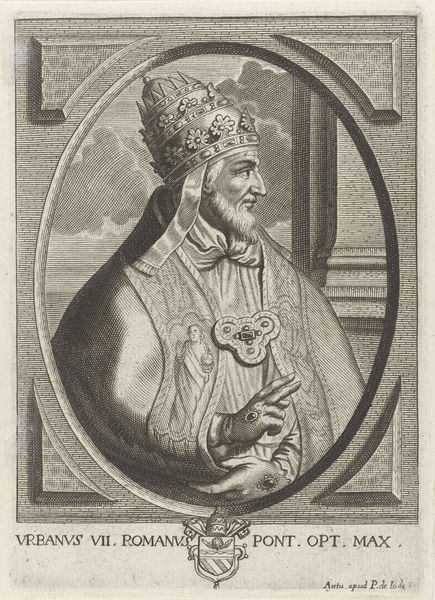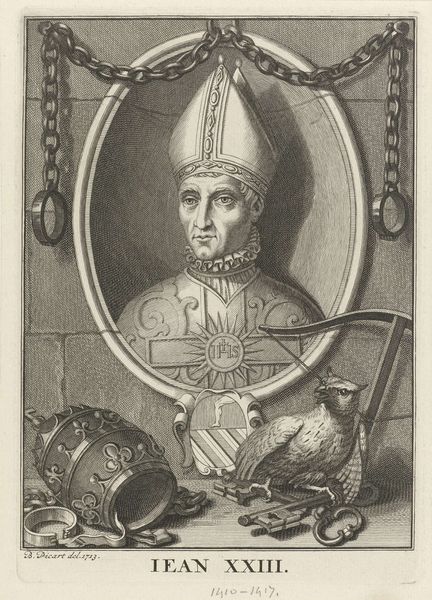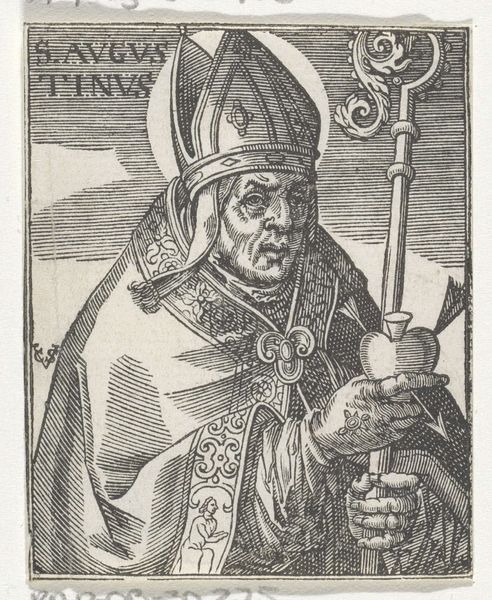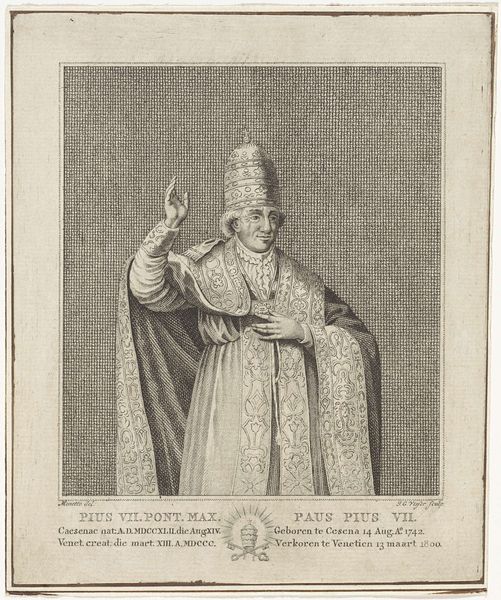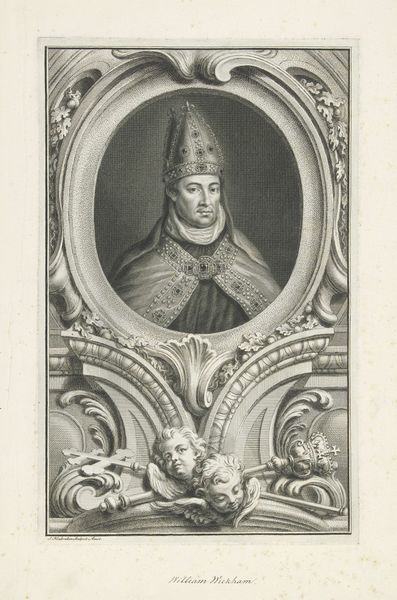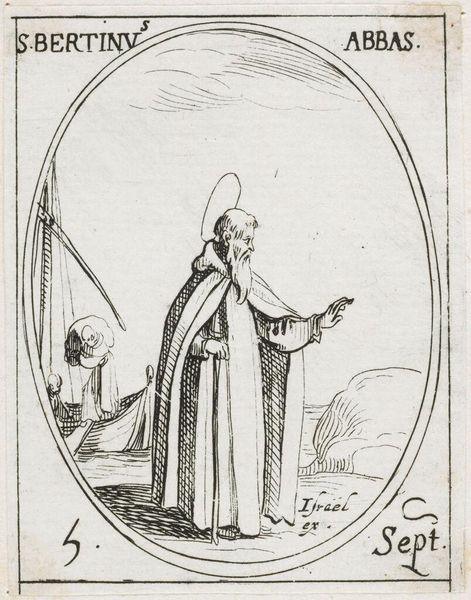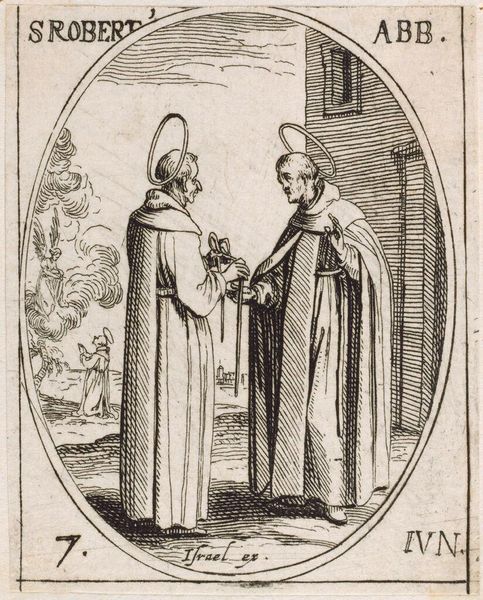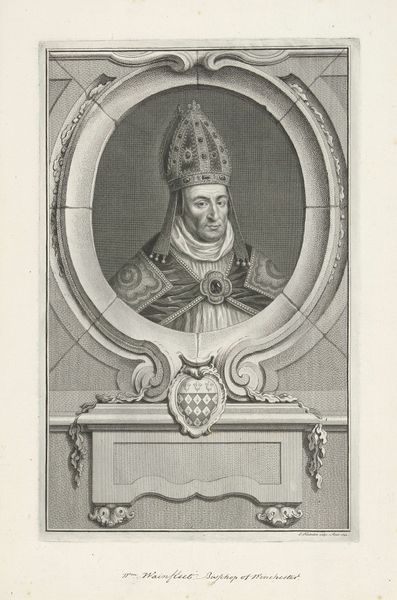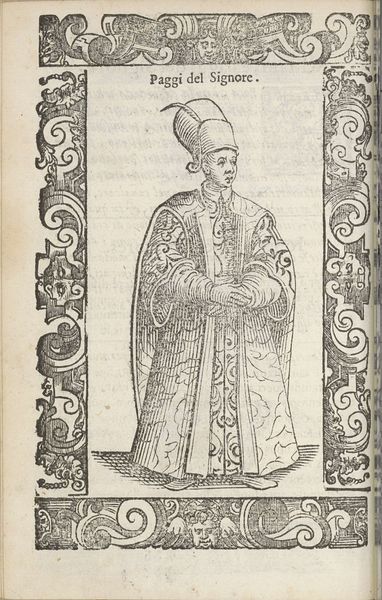
print, engraving
#
portrait
# print
#
history-painting
#
engraving
Dimensions: height 75 mm, width 45 mm
Copyright: Rijks Museum: Open Domain
Editor: So, here we have an 18th-century engraving titled "Portret van Albuin, bisschop van Merseburg," attributed to an anonymous artist. I find the cross-hatching quite striking – it gives the figure a certain weight despite the small scale. What stands out to you about the composition? Curator: The formal structure relies heavily on contrasting textures and lines. Note how the relatively smooth planes of the face and the shield at the bottom juxtapose the densely hatched cloak and background. This creates visual interest and separates the Bishop from his environment. The use of linear perspective, however rudimentary, gives the illusion of depth. Are you also drawn to the starkness of the figure against the neutral ground? Editor: Yes, I see that. The flatness of the ground, combined with the attempt at three-dimensionality on Albuin, gives the piece an odd tension. Why do you think the artist chose to focus on texture in this way? Curator: Texture in engraving often compensates for the absence of color. The varying density of lines not only creates depth but also suggests different materials - the sheen of silk in the cloak, the solidity of the Bishop’s mitre. Furthermore, consider the function of line as symbolic here. Notice how the direction and density of the lines define contours and shadow, building the composition through structural oppositions, effectively directing the gaze. Is the focus primarily representational, or do you believe there is a degree of artistic expression in the graphic representation? Editor: I think there’s definitely some artistic expression, especially in the way the textures are exaggerated. I’ve certainly learned a new way to read an engraving. Curator: Precisely. By isolating and analyzing the visual elements, we can decode the artwork's compositional intentions, thereby arriving at an objective understanding.
Comments
No comments
Be the first to comment and join the conversation on the ultimate creative platform.
